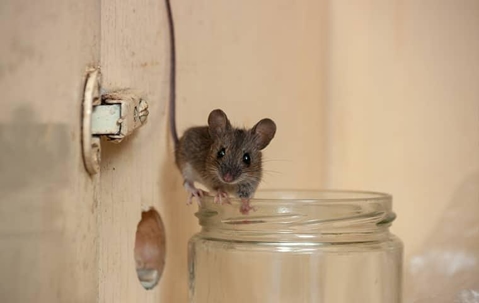It’s not often, but some insects and creatures are considered “cute” by Pensacola residents. It could be a pest’s bright colors or zany patterns that make them appear adorable and innocent. In many cases, it’s button noses, teeny ears, and beady eyes that do it. Whiskers and amusing movements don’t hurt. The reality is the majority of creepy crawlers are very dangerous. Rodents are a perfect example.
Rodents can scratch or bite you. Even worse, they harbor vicious germs that can cause illness. If you get away unscathed from them, your home or belongings certainly won’t. Takeovers can happen quickly, as these animals are prolific. Learn about their risk factors and how to keep them away with EnSec.
What Rodents Are Common in Pensacola? What Are the Dangers?
House mice and Norway rats are two of the most common rodents in the region. House mice earn their name well; they are pervasive interior invaders. It’s mainly because they gain from the wealth of water, food, and warmth afforded to them by domiciles. You’ll find them in the dark and quiet parts of your abode, especially if it’s humid or damp, for instance, the basement or a cabinet. They also hide in structural voids. Persistent trouble with these pests is expected if you live by a grassy or woody plot. House mice are 7 inches long. Short brown, gray, or black hair covers them, and they have stomachs with a lighter shade. Akin to house mice, Norway rats originate in natural settings. They can be a detriment to land because they constantly dig tunnels and burrows in the soil. These dirt ways are their avenue into your home. If your foundations aren’t in excellent condition, it will be easier for them to penetrate. Being very large creatures, Norway rats are 15 inches long with 7-inch tails. They have wild gray or brown fur. Infestation signs to look for are:
- Spotting these nocturnal pests in daylight
- Detecting squeaking and scratching from inside walls
- Seeing feces and footprints
- Finding greasy rub stains along foundations and edges
Rodents will chew on anything they can find to saw down their teeth. Walls, cords, and pipes are a few of the items they tend to target. Severe cosmetic injury, fixture problems, and electrical shortages are liable to occur. Even fires might happen with frayed wires. Any one of these happenings will be expensive to manage. As it pertains to health, you’ll be trying to combat food and surface contamination. These vermin will be coming into your home from gutters, garbage cans, and other nasty locations. The microbes rodents will have on them will be countless. Moreover, they have parasites in their fur. Their saliva and waste also contain bacteria. Salmonella, hantavirus, and leptospirosis are among the diseases they can transfer.
What Can Be Done to Prevent Rodents?
To discourage rodent intrusions, do the following:
- Reduce clutter
- Wash dishes and thoroughly clean the kitchen regularly
- Routinely vacuum, sweep, and mop
- Put food, pet meals, and trash in secure containers
- Repair leaks and moisture malfunctions
- Seal crevices in doors, windows, and foundations with caulk or steel wool. Plastic and rubber can be gnawed through.
- Flush out drains and gutters recurrently
- Groom your lawn and greenery
- Distance plants from exterior doors
How Will EnSec Handle Rodents?
We at EnSec have been in business for over 20 years successfully because we believe in comprehensive care. Our services are economically sound and include stalwart and versatile treatments for both the interior and exterior. No rodent will survive. Most importantly, our solutions are eco-friendly. Our staff is comprised of certified individuals and entomologists. You’ll be in good hands. Call EnSec today for a free estimate!

